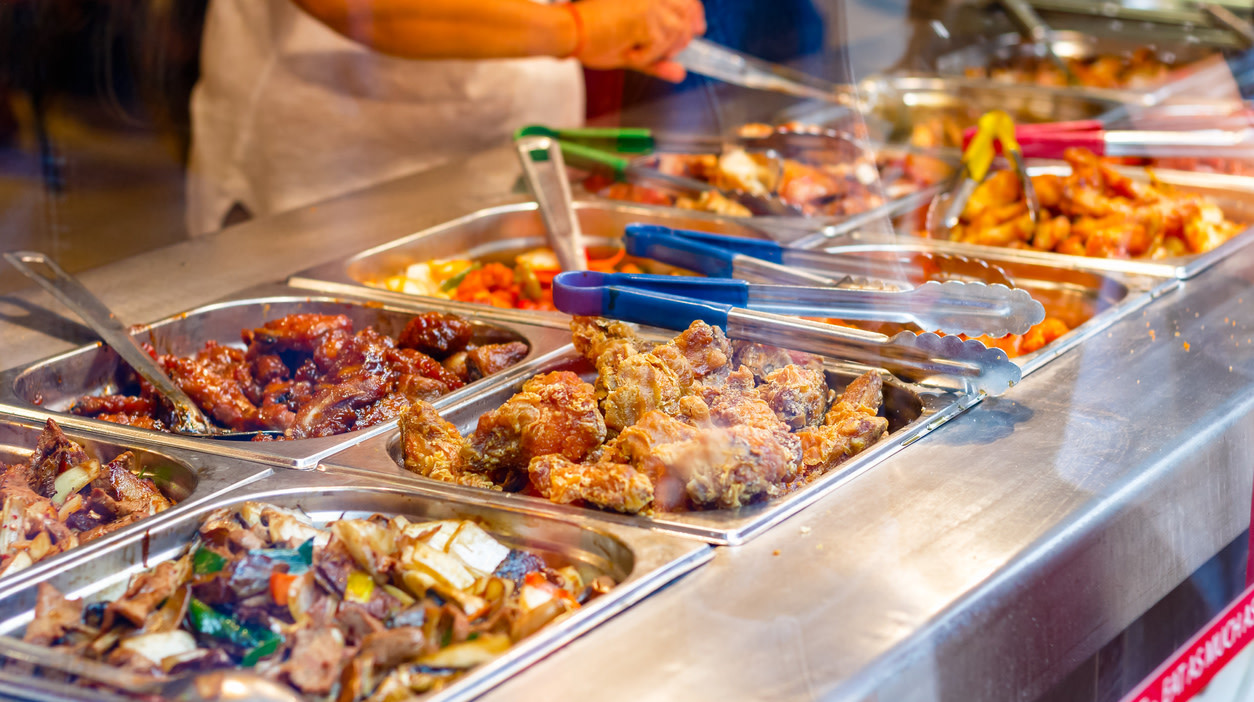How Do All-You-Can-Eat Buffets Make Money?
There are times when there is nothing in the world that is more beautiful than an all-you-can-eat buffet—like when you're exceptionally hungry or indecisive or if you happen to be a high school football player. All this food! And you can take as much of it as you want! Try everything! Who's going to stop you?
There are other times, though, like when you see those football players going back for thirds and fourths, that you wonder, how the hell do these places make money? Over at The Hustle, Zachary Crockett has done a deep dive into the economics of all-you-can-eat buffets—with charts and graphs and everything! There is no greater pleasure than when someone else goes to the trouble to satisfy your curiosity for you.
Crockett's analysis is based on data he collected from 30 buffets across the country. (One of them, the Red Apple Buffet, which served vast quantities of Polish food in Chicago, has, alas, recently closed one of its two locations.) The average buffet charges $20 for an all-you-can-eat plate and makes $1 profit. A successful buffet keeps labor costs low—no servers, a small kitchen staff that makes enormous portions of everything all at once—and foot traffic high. The business model allows for a few losses—the football players—that will be made up for by the many more customers who don't eat their money's worth.
An important buffet strategy note: They put all the breads and starches at the front for a reason. If you fill up on all that stuff, you won't have room on your plate or in your stomach for the more expensive meat at the back. And no, it's not your imagination: Those plates and meat tongs are unusually small.
All that stuff is fascinating, but the true highlight of this report is the collection of tales of people who have been thrown out of buffets for eating too much. These are some spectacular acts of gluttony, and if any of you have equaled them, I would like to hear about it.
